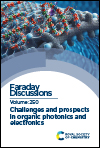Accelerated basis-set convergence of coupled-cluster excitation energies using the density-based basis-set correction method
Abstract
We present the first application to real molecular systems of the recently proposed linear-response theory for the density-based basis-set correction method [J. Chem. Phys. {\bf 158}, 234107 (2023)]. We apply this approach to accelerate the basis-set convergence of excitation energies in the equation-of-motion coupled-cluster singles doubles (EOM-CCSD) method. We use an approximate linear-response framework which neglects the second-order derivative of the basis-set correction density functional and consists in simply adding to the usual Hamiltonian the one-electron potential generated by the first-order derivative of the functional. This additional basis-set correction potential is evaluated at the Hartree-Fock density, leading to a very computationally cheap basis-set correction. We tested this approach over a set of about 30 excitation energies computed for five small molecular systems and found that the excitation energies from the ground state to Rydberg states are the main source of basis-set error. These excitation energies systematically increase when the size of the basis set is increased, suggesting a biased description in favour of the excited state. Despite the simplicity of the present approach, the results obtained with the basis-set corrected EOM-CCSD method are encouraging as they yield to a mean absolute deviation of 0.02 eV for the aug-cc-pVTZ basis set, while it is of 0.04 eV using the standard EOM-CCSD method. This might open the path to an alternative to explicitly correlated approaches to accelerate the basis-set convergence of excitation energies.
- This article is part of the themed collection: Correlated electronic structure

 Please wait while we load your content...
Please wait while we load your content...